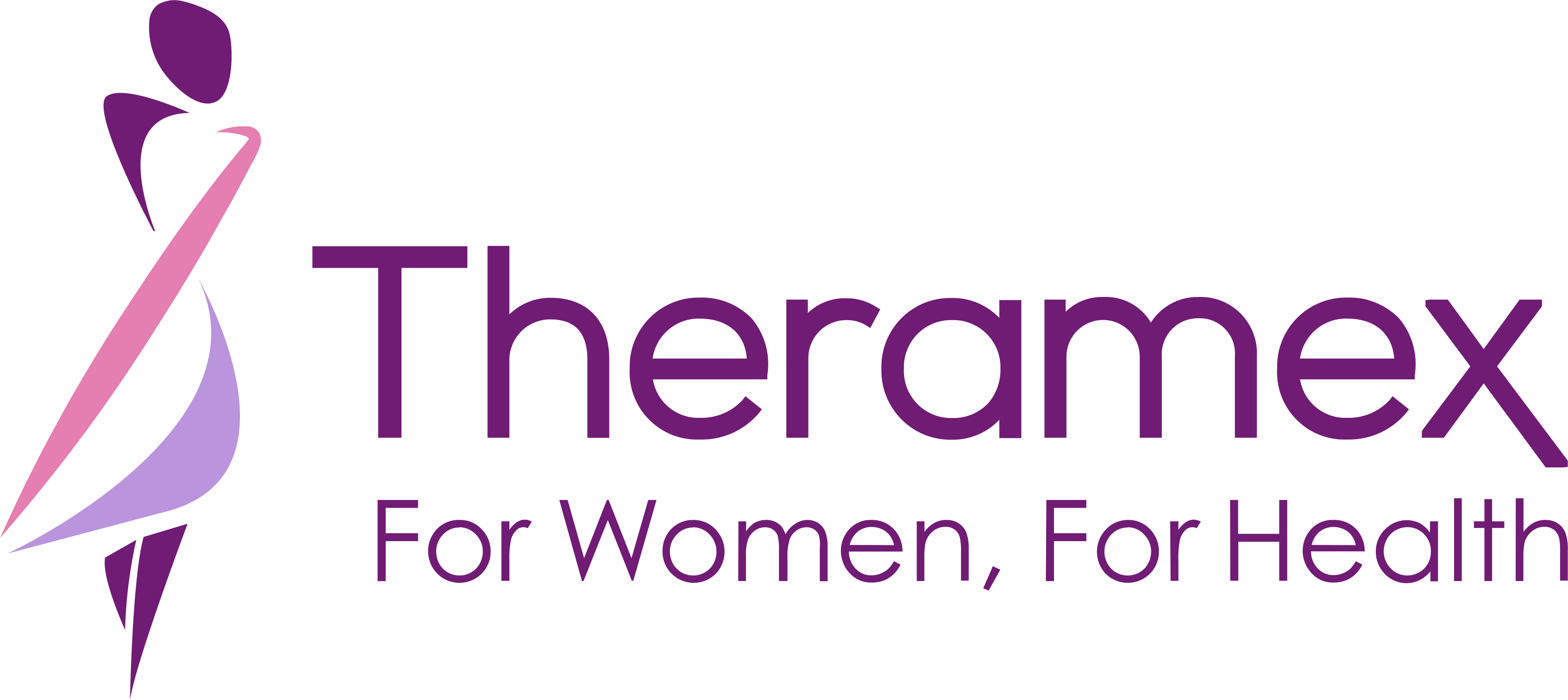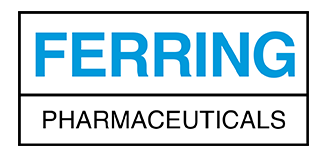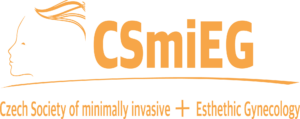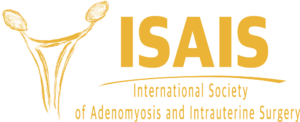Final Program
Thursday, April 18th
Friday, April 19th
Saturday, April 20th
E-Poster list
Thursday, April 18th
Welcome Desk Opening
Simultaneous Pre-Congress Courses


Level -1 / Room 1 – Pre-Course 1
Organoid Medicine
Models for understanding early events and clinical implications in benign gynaecological pathologies: fibroids, endometriosis and adenomyosis
Organizers: Marie-Madeleine Dolmans (Belgium) & Ayman Al-Hendy (USA)
Session 1 : Modeling fibroids
- Novel human myometrium and fibroid 3D organoid systems – Ayman Al-Hendy (USA)
- Studying risk factors using organoids of female reproductive tract – Julie Kim (USA)
- Panel discussion
Session 2 : Modeling adenomyosis
- Organoids as a model to study adenomyosis pathogenesis – Marie-Madeleine Dolmans & Christina Anna Stratopoulou (Belgium)
- Adenomyosis endometrial organoids as a potential preclinical model to study its pathogenesis and related infertility – Hortensia Ferrero (Spain)
- Panel discussion
Coffee break
Session 3 : Modeling endometriosis
- The Spheroids as a model for understanding early events in endometriosis pathology – Asgerally Fazleabas (USA)
- Panel discussion

Level -1 / Room 4 – Pre-Course 2
Infertility
Organizers: Pietro Santulli (France) & Fernando Reis (Brazil)
Session 1: ART and endometriosis: difficult cases
- Safety and efficacy of ART in case of endometriosis – Chloe Maignien (France)
- When should we move to surgery before ART in case of endometriosis – Jean-Marie Wenger (Switzerland)
- How to improve ART outcomes in presence of adenomyosis – Mathilde Bourdon (France)
- Should we propose fertility preservation in case of endometriosis – Isabelle Streuli (Switzerland)
Coffee break
Session 2: How to optimize implantation chances for women undergoing ART
- Are we sure that endometrial polyps and submucous fibroids must be removed before IVF? – Silvia Vannuccini (Italy)
- Uterine congenital malformations, is really surgery needed? – Sergio Haimovich (Spain)
- Reproductive outcomes in endometriosis-associated infertility: effects of surgery, IVF and integrated approach – Antonio Simone Laganà (Italy)
- Obstetrical outcomes after ART – Louis Marcellin (France)
- What is the impact of endometriosis on donor cycles? – Paola Vigano (Italy)
- Panelist discussion and pre-congress course close summary

Level -1 / Room 2 – Pre-Course 3
Gynaecological imaging in the transitional phases of life
Organizers: Anne-Elodie Millischer (France) & Thierry van den Bosch (Belgium)
Part 1: ADOLESCENCE
- Does adenomyosis exist in adolescents: how can it be detected? – Francesco G. Martire (Italy)
- Endometriosis in adolescents: how should it be investigated? – Anne-Elodie Millischer (France)
- Menometrorrhagia in adolescents: how to look for it? – Maya Almemar (UK)
- Unveiling the Unseen: Mastering Ultrasound for Superficial Endometriosis Detection – Mathew Leonardi (Canada)
Coffee break
Part 2: MENOPAUSE
- Adenomyosis : update of the new MUSA criteria/ particularities at menopause? – Thierry van den Bosch (Belgium)
- Endometrioma and ovarian cancer: greater risk at the menopause? Particularities of imaging – Flavia Sorbi (Italy)
- Changes in myomas at the menopause: what should be done on imaging? – Anne-Elodie Millischer (France)
Level -1 / Room 3 – Pre-Course 4
Chronic pain in women: Manual and physical management
Organizers: Cécile Tenot (Switzerland) & Sandrine Balisson (Switzerland)
- Chronic pelvic pain: a need for a multimodal approach – Ramona Ramsauer (Switzerland)
- Abdominopelvic pain, mictalgia, dyspareunia & dyschesia in endometriosis: management in osteopathic care – Laure-Isabelle Kazemi (Switzerland)
- Pain education and therapeutic touch: a start to reduce chronic pain – Cécile Tenot (Switzerland)
Coffee break
- Chronic pain in endometriosis : skills integration, manual and physical management in physiotherapy – Biljana Kennaway (Switzerland)
- Use of neuromodulation (posterior tibial nerve, sacral roots, vagus nerve) – Daniela Dias (Switzerland)
- Effectiveness of physical activity in pain management – Biljana Kennaway (Switzerland)
Simultaneous National Sessions
Session 1: Fibroid and adenomyosis
- Adenomyosis and fertility – Asha Rao
- Adenomyosis: surgical nuances – Divyesh Shukla
- Robotic advantage in surgery for diffuse adenomyosis – Rooma Sinha
- Decision making for surgeries of intramural & subserous myomas – Priya Bhave
- Challenges of Submucous myoma – Mala Raj
- Is there a role of long term medical management for AUB-L – Manjula Anagani
- Surgical strategies for hysterectomy in frozen pelvis – Prashant Mangeshikar
Session 2: Endometriosis
- The Indian & South Asia survey about endometriosis – Pradip Mitra
- Teenage endometriosis: challenge to diagnose, challenge to treat – Sonal Kotdawala
- Fertility and endometriosis: Current concepts – Anu Chawla
- IVF in Endometriosis – Malvika Mishra
- Surgical strategies for colorectal endometriosis – Abhishek Mangeshikar
- Adhesions and endometriosis: an unholy alliance – Parul Kotdawala
- Pain in Endometriosis: various pathways and management – Parul Kotdawala
- Power of patients – connecting experts and leading system changes – Michaela Lebeda
- Peer support program for patients: the importance of support and education – Martina Sehnoutkova
- The effect of complex physiotherapy on the quality of life of patients with endometriosis – Lenka Chuchutová
- Endometriosis in Naturotherapy – Gabriela Tuatti
- Patient as the center of complex therapy – multidisciplinary bridge – Jan Kummel
- Endometriosis associated infertility – surgery or IVF first? – Jan Drahonovsky
- EUROENDOCERT as a quarantor of the quality of the endometriosis centres in Czech Republic – Radek Chvatal
- Where is the responsibility, possibilities, importance and limits of primary centers: Endometriosis Out-Patient Clinics/Office Gynecology in the field of endometriosis and adenomyosis? – Lubomir Mikulasek
- Development of new and innovative methods in the surgical treatment of endometriosis – Jiri Hanacek
- The essential role of advocacy in efforts to establish comprehensive endometriosis care – Ondrej Simetka
- Discussion and conclusion – All of the experts
- Ultrasound for the diagnosis of endometriosis – Ashraf Aleyaseen
- MRI for the diagnosis of endometriosis – Mehrzad Lotfi
- Management of Endometrioma – Ashraf Moieni
- Role of ART In endometriosis – Saghar Salehpor
- Medical and Surgical Management of DIE – Khadijeh Shadjoo
- New updates in endometriosis – Saeed Alborzi
08:00 – 10:00 • LATAM/SPAIN
Level 2 / Room 11
Chairs: Francisco Carmona (Spain) & Juan Salgado (Porto Rico)
- Fertility management in women with adenomyosis – Francisco Carmona (Spain)
- Challenges in adenomyosis diagnosis – Mariona Rius (Spain)
- Parametrial and Sciatic nerve robotic approach – Thiers Soares (Brazil)
- Preoperative Transvaginal Ultrasonography for adhesions in TLH to prevent surgical surprises – Juan Salgado (Porto Rico)
- Endometriosis in Adolescents – Agnieszka Drosdzol – Cop
- Gender incongruence of adolescence -pros and cons of a GnRH treatment – Monika Grymowicz
- Lateral uteropexy in the treatment of female genital prolapse – Maciej Wilczak
- Endometrial dysbiosis in women with repeated implantation failure : how to diagnose and treat it – Vito Cela
- Kisspeptin and Endometriosis – Blazej Meczekalski
08:00 – 10:00 • SWITZERLAND
Level 2 / Room 9
Isthmocele and Cesarean Scar
Chairs: Alexandra Kohl Schwartz & Christian Polli
- Isthmocele definition and diagnosis – Arrigo Fruscalzo
- Isthmocele and fertility – Marietta Gulz
- When to operate isthmocele and when to abstain: when and which route? – Markus Eberhard
- Isthmocele and pregnancy outcome – Ladina Vonzun
- Utilizing Social Media for Women’s Health Care – Olarik Musigavong
- Enhanced Pre-Operative Evaluation of Pouch of Douglas Obliteration at The Entry Site of The Transvaginal Natural Orifice Transluminal Endoscopic Surgery (vNOTES) by “Sliding Signe” – Siwaporn Siripenpong
- Breaking Barriers: Analgesics and the Role of Cannabinoids in Endometriosis Pain Management – Siriruthai Amnatbuddee
- The in-depth exploration of the operative office hysteroscopy: How to succeed ? – Woradej Hongsakorn
- Ovocyte cryopreservation in Endometriosis: When & Worth? – Weena Krutsawad
- Role of gynecologist in bladder and ureteral endometriosis – Srithean Lertvikool
- The Contribution of Obstetricians in Addressing Declining Birth Rates and an Aging Population in Thailand – Vitaya Titapant
- Endometriosis and Sexual Satisfaction: How to improve orgasmic phase? – Thiranu Sasunee
- Understanding Uterine Fibroids During Pregnancy from a Thai Cultural Perspective – Wilasinee Chansin
- Occult Uterine Sarcomas: Pre and Intra-operative Considerations – Chuleekorn Sritonchai
10:00 – 12:00 • CANADA
Level 3 / Room 16
Advanced imaging in minimally invasive gynecology: a game-changer for surgery
Chair: Sarah Maheux-Lacroix & Jamie Kroft
- Diagnosis is preparedness: pre-operative ultrasound is necessary before optimal endometriosis surgery – Mathew Leonardi
- Adenomyosis: a determining finding for surgical management – Sarah Maheux-Lacroix
- Cesarean Scar Defect – Diagnosis, Treatment and Prevention – Ally Murji
- Evaluation and laparoscopic treatment for bladder endometriosis – Jinhua Leng
- Laparoscopic techniques for Rectovaginal septum endometriosis – Yingfang Zhou
- Laparoscopic non stapler intestinal segmental resection for bowel endometriosis and postoperative management – Xinmei Zhang
- Laparoscopic resection of abdominal wall endometriosis – Shuzhong Yao
- MDT assists in the management of complex endometriosis patients with fertility requirement – Lijie Wang
- Education for patients with endometriosis – Guoyun Wang
- Diagnosis and treatment strategies for adolescent endometriosis – Keqin Hua
- Transabdominal resection and abdominal wall repair for giant abdominal endometriosis – Yi Dai
- Novel 3D models of the endometrium and endometriosis – Martin Götte (Germany)
- Stem cells and progenitor cells in endometriosis – Antonio Simone Laganà (Italy)
- Genetics in endometriosis: leveraging results for patient benefit – Krina Zondervan (UK)
- Towards a shorter diagnostic delay in endometriosis; the GP perspective – Annemiek Nap (The Netherlands)
Plenary room A
Lunch Symposium n°1
Linzagolix – a flexible treatment option for women with uterine fibroids
Chair: Marie-Madeleine Dolmans (Belgium)

- Welcome and Introduction – Marie-Madeleine Dolmans (Belgium)
- Uterine fibroids – disease burden and future directions – Francisco Carmona (Spain)
- Linzagolix – the option of flexible individualized therapy for women with uterine fibroids – Sven Becker (Germany)
- Q&A and closing remarks – All of the experts
Exhibition hall
Lunch Break & Exhibition Hall Visit
Plenary room A
Opening Ceremony
- SEUD President: Francisco Carmona (Spain)
- Congress Presidents: Michael Mueller & Nicola Pluchino (Switzerland)
Plenary room A
Big Bang Talk n°1
- Charismatic leadership – John Antonakis (Switzerland)
Plenary room A
Plenary Session 1 – Endometriosis: Strategies for pain management
Chairs: Christian Polli (Switzerland) & Paola Vigano (Italy)
with the unrestricted financial support of

- Neurobiology of pain – Brett McKinnon (Australia)
- Adolescents and young women – Sara Imboden (Switzerland)
- In patient with pregnancy desire – Francisco Carmona (Spain)
- In patient with recurrent – Alan Lam (Australia)
Plenary room A
Keynote Lecture 1
Chair: Marie-Madeleine Dolmans (Belgium)
- Heavy menstrual bleeding and dysmenorrhea: the key symptoms of menstruation-related disorders – Felice Petraglia (Italy)
Plenary room A
Simultaneous symposium n°1
Next Generation Sequencing in Saliva transforming clinical practice and precision medicine
Chair: Michael Mueller (Switzerland)

- Endometriosis : The Invisible Disease? – Megan N. Wasson (USA)
- Endometriosis : Game over in 2024? – Sofiane Bendifallah (France)
- How to deal with unexplained chronic pelvic pain? – Michelle Nisolle (Belgium)
- Conclusion – Charles Chapron (France)
Plenary room B
Simultaneous symposium n°2
High-frequency surgery innovations and how they support treatment excellence in different manifestations of endometriosis

- First results with precise APC – a new treatment method for ovarian endometrioma – Massimo Candiani (Italy)
- Benefits of a new energy device for treatment of deep infiltrating endometriosis – Carlo Alboni (Italy)
Exhibition hall
Coffee Break & Exhibition Hall Visit
Simultaneous Plenary Sessions
Plenary room A
Plenary Session 2 – Uterine congenital malformations
Chair: Peter Martin Fehr (Switzerland)
Provoker: Attilio di Spiezo (Italy)
- Diagnosis by ultrasound – Peter Oppelt (Austria)
- Surgical therapy – Sergio Haimovich (Spain)
- Obstetrical outcome – Stefano Bettocchi (Italy)
Plenary room B
Plenary Session 3 – IVF in Endometriosis and Adenomyosis
Chairs: Paolo Levi-Setti (Italy) & Lubomir Mikulasek (Czech Republic)
- Impact of adenomyosis on implantation in IVF patients – Jacques Donnez (Belgium)
- Cumulative pregnancy rate in endometriosis and adenomyosis – Pietro Santulli (France)
- The optimal ovarian stimulation protocol for women with endometriosis – Ying Cheong (UK)
- Management of large endometrioma before IVF – Nicola Pluchino (Switzerland)
Exhibition hall
Welcome Cocktail
Friday, April 19th
Welcome Desk Opening
Simultaneous Free Communications
Free Communication 1 – Level -1 / Room 1
- Optimizing treatment strategies for abnormal uterine bleeding associated with endometrial hyperplasia: what is the role of the immunohistochemistry markers? – Kristina Shcherbatiuk (Russia)
- Drug repurposing screening and mechanism analysis using human MMSCs derived organoids – Mervat Omran (USA)
- Hematological Safeguards for Uterine Surgery – Hesham Arab (KSA)
- Acupuncture is effective in treating pelvic pain associated to endometriosis, specially in patients with associated myofascial pain – Carlos Souza (Brazil)
- Understanding Dysmenorrhea in Women with Polycystic Ovary Morphology (PCOM):
A Retrospective Study – Paola Romeo (Canada) - The clinical manifestations of benign ovarian locations – Dilafruz Urinbaeva (Uzbekistan)
- The role of Neuron Growth Factor (NGF) and Interleukin-10 (IL-10) in the development of pain in adenomyosis : A Narrative Review – Agus Heriyanto (Indonesia)
Free Communication 2 – Level -1 / Room 2
- Impact of concomitant hysterectomy on menopausal symptoms and sexual functioning in BRCA mutation carriers following salpingo-oophorectomy – Michelle Jacobson (Canada)
- Assessment of expression of certain subunits of nicotinic acetylcholine receptors, and long non-coding rna and ribosomal genes in cells of uterine fibriods – Mariami Kaviladze (Russia)
- Investigating the Effect of Nanoplastics on Female Reproductive System – Mahsa Gholiof (Canada)
- Accounting for Intraoperative Resuscitation During Surgical Management of Placenta Accreta Spectrum Cases at a Tertiary Care Centre: A Quality Improvement Retrospective Cohort Study – Mahsa Gholiof (Canada)
- MRI evaluation of Müllerian duct anomalies: a comparison of different classification systems – Laura D’Hoore (Belgium)
- Is it possible to predict in-vitro fertilization success by epigenetic age? – Letizia Li Piani (Italy)
- High risk pregnancy after uterine transplant: atypical hemolytic uremic syndrome – Mariona Rius (Spain)
- Menstrual pain and bleeding in adolescence in women who develop endometriosis – Michela Santalucia (Italy)
Free Communication 3 – Level -1 / Room 3
- Therapeutic Role of Pelvic Lymphadenectomy for Locally Advanced Cervical Cancer: A SEER-based Study – Aiyuan Wu (China)
- Endometrial Insights: Unmasking Endometriosis through Single-Cell Profiling and AI-Based Prediction – Lea Duempelmann (Switzerland)
- Intraoperative Appearance of Endosalpingiosis: A Single-Center Experience of Laparoscopic Findings and Systematic Review of Literature – Nicolas Samartzis (Switzerland)
- Adenomyosis with predominance of the posterior myometrium is associated with rectal and intestinal deep endometriosis on magnetic resonance imaging (MRI): a retrospective study – Nicolas Samartzis (Switzerland)
- Machine learning predicts poor pain-related quality-of-life after endometriosis surgery – Dwayne Tucker (Canada)
- Surgical Management of Ovarian Endometriomas: A Service Evaluation of Clinical Outcomes at UHS – Emily Kent (UK)
- Proteomic profiling of ovarian endometriosis for recurrence risk prediction – Carina Masferrer Ferragutcasas (Spain)
Free Communication 4 – Level -1 / Room 4
- Spatially resolved cell atlas of the endometrium and endometriotic lesions – Sharat Atluri (Australia)
- Genetic susceptibility to endometriosis manifested in endometrial stromal cell-epithelial organoid interaction – Brett McKinnon (Australia)
- Excessive endoplasmic reticulum stress due to endometriosis results in ovarian dysfunction in a mouse model of ovarian endometriosis – Jingsong Yi (China)
- Differential oral, vaginal, and stool microbial signatures in patients with and without endometriosis – Fatima El-Assaad (Australia)
- Endometriosis and risk of depression among oral contraceptive users: a pooled analysis of cohort studies from 13 countries – Pauline De Corte (Germany)
- Endo-Teach: an innovative secondary-school teaching package to educate on menstrual health and to build awareness of endometriosis in Switzerland – Cloe Vaineau (Switzerland)
- Health and Socioeconomic Well-being of Women with Endometriosis and Provoked Vestibulodynia: Longitudinal Insights from Swedish Registry Data – Philip Haraldson (Sweden)
Free Communication 5 – Level 2 / Room 9
- SPIRIT Long-Term Extension Study: Subgroup Analyses of Dysmenorrhea and Non-Menstrual Pelvic Pain Response Through 104 Weeks – Christian Becker (UK)
- SPIRIT Long-Term Extension Study: Post Hoc Analysis of Relugolix Combination Therapy Through 104 Weeks in Young Adults (18–24 Years Old) – Christian Becker (UK)
- Linzagolix improves endometriosis-associated pain: Key findings from EDELWEISS 3, a placebo-controlled phase III study – Felice Petraglia (Italy)
- Novel therapy with anti-IL-8 neutralizing antibody for endometriosis based on pathophysiology – inflammation and fibrosis in the component of interstitium of endometriosis – Ryo Konno (Japan)
- Single-cell transcriptome analysis of early placentas in endometriosis – Kheira Bouzid (France)
- NEK2 promotes development and causes decidualization disorder in endometriosis via phosphorylation of FOXO1 – Tingting Yang (China)
- Advanced Haemostasis Evaluation in Endometriosis – Maíra Casalechi (Italy)
Free Communication 6 – Level 2 / Room 11
- Prospective diagnostic accuracy study using transvaginal ultrasound according to the IDEA consensus with the novel addition of superficial endometriosis – Ido Mick (Canada)
- Determining the Prevalence and Severity of Appendiceal Endometriosis in Women with Diaphragmatic Endometriosis; Applying the Menstrual Reflux Theory – Flavia Pagano (Switzerland)
- A clinicoanatomic analysis of Bladder endometriosis and its association with adenomyosis – Milena Schnell (Switzerland)
- Bioinformatic approach highlights cellular compositions in endometriosis organoids – Nazli Ece Ordueri (Turkey)
- Comparative effect of different surgical treatments for ovarian endometrioma on AMH: a systematic review and network meta-analysis – Konstantinos Nirgianakis (Greece)
- Clinical features and sonographic characteristics of deep endometriosis affecting the sacral plexus and sacral nerve roots with TVS – Gábor Szabó (Hungary)
- Establishment of experimental protocols for microplastic exposures in human endometrial cells and possible association of microplastics in the pathogenesis of endometriosis – Hyemin Park (Korea)
- Moving forward with endometriosis MRI protocol. Potential for more sensitive endometriosis diagnostics and faster MRI protocol – Kirsi Härmä (Finland)
Free Communication 7 – Level 2 / Room 12
- Pathologic findings and markers of endometriosis in the EndoSearch cohort of patients – Guy Lesec (France)
- Research on the Role of Iron Overload in Ovarian Endometriosis and Its Clinical Implications – Guoyun Wang (China)
- Exploring the Influence of Adenomyosis with or without Endometriosis on Fertility and Pregnancy Outcomes: Insights from a Retrospective Cohort with histologically confirmed adenomyosis – Georgios Kolovos (Switzerland)
- Proportion of Women Achieving Mild-to-No Endometriosis-Associated Pain with Relugolix Combination Therapy over 24 Weeks in the SPIRIT program – Helen Saunders (Switzerland)
- Endometriotic lesion of sacro-uterine ligament: a rare clinical case – Khava Mashtagova (Russia)
- Association between Endometriosis and Cardiovascular Disease Risk Profile – Olga Bougie (Canada)
- Endometriosis as a risk factor for ischemic stroke: a population-based cohort study – Olga Bougie (Canada)
- The Ranking of Interventions for Endometriosis-Associated Pain: A Network Meta-analysis – Tatjana Gibbons (UK)
Free Communication 8 – Level 2 / Room 14
- Serum Progesterone levels do not differ between endometriosis and unaffected patients who conceive in Hormone Replacement Therapy-Frozen Blastocyst Transfer (HRT-FBT) cycles – Mathilde Bourdon (France)
- Exploring the association between endometriosis and vaginal dysbiosis: an analysis of Fusobacterium sp. prevalence in vaginal swab through NGS techniques – Matteo Niero (Italy)
- How to create and manage assembloids, the most accurate 3D model of endometrium – Margherita Rossi (Italy)
- A mobile application as supportive treatment of endometriosis: the effect on quality of life and endometriosis-associated pain. A randomized controlled trial. MASQUE-Trial – Marietta Gulz (Switzerland)
- Genetic analysis of potential biomarkers and therapeutic targets in pyroptosis and glycolysis from endometriosis – Rui Gu (China)
- Abdominal bloating and gastro-intestinal symptoms in endometriosis: lactose intolerance and SIBO comorbidities – Virginia Manzi (Italy)
- Robotic-assisted laparoscopy excision of severe form of diaphragmatic endometriosis: a retrospective study on 60 patients – Horace Roman (France)
- Prediction of infertility in patients with endometriotic disease – Janna Pakhomova (Uzbekistan)
Free Communication 9 – Level 3 / Room E
- Mobile application for the early recognition of menstrual irregularities and diseases (like endometriosis) – Salamon Adrienn (Hungary)
- Endometriosis as a risk factor for severe pelvic inflammatory disease – Marta Camacho (Spain)
- Previous surgery for endometriosis: an additional factor for obstetric complications? – Anna Rosa Speciale (Italy)
- Approach to ureteral endometriosis: A single-center experience and meta-analysis of the literature – Saeed Alborzi (Iran)
- Evaluation and comparison of the accuracy of transvaginal ultrasound and MRI for the diagnosis of deep rectal endometriosis: A cross-sectional study – Saeed Alborzi (Iran)
- Successful laparoscopic sigmoid transposition for cervicovaginal agenesis in the presence of a functioning uterus: A case series – Saeed Alborzi (Iran)
- The effect of vasopressin injection on ovarian reserve in patients with ovarian endometrioma: a randomized controlled trial – Saeed Alborzi (Iran)
Free Communication 10 – Video Session 1 – Level 3 / Room F
- Teaching Video – Visualization of Endometriosis, Sonographic and laparoscopic findings according to #ENZIAN – Paula Zimmermann (Switzerland)
- Minimally Invasive Surgery for A Rare Case of Malignant Extra-Ovarian Endometriosis – Xiaofang Yi (China)
- A laparoscopic resection of a rudimentary uterine horn, complicated with a late first trimester ectopic pregnancy: a one of a kind case – Francesca Donders (Belgium)
- Transvaginal natural orifice transluminal endoscopic surgery (vNOTES) in hysterectomy and salpingectomy – Jichan Nie (China)
- Demystifying the Hohl Uterine Manipulator for Total Laparoscopic Hysterectomy – Erica Pascoal (Canada)
- Laparoscopic ureterolysis and resection of deep endometriosis – Ding Ding (China)
- Laparoscopic Combined Hysteroscopic Removal of a Perforating Intrauterine Device During Pregnancy – Yu Chen (China)
- Modified approach in congenital cervical and vaginal atresia(U0C4V4) with endometriosis – Hexia Xia (China)
- Tips and tricks to optimize ultrasound imaging of recto-vaginal endometriosis – Francesca Donders (Belgium)
Plenary room A
Plenary Session 4 – Heavy Menstrual Bleeding (HMB)
Chairs: Jacques Donnez (Belgium) & Daniel Surbek (Switzerland)
- HMB: Basic Science – Ayman Al-Hendy (USA)
- Iron Deficiency and Anemia – Drazen Pulanic (Croatia)
- HMB: Medical Management – Fernando Reis (Brazil)
- Vicious life cycle of ID/IDA in women: How to translate improvements into clinical practice? – Daniel Surbek (Switzerland)
Exhibition hall
Coffee Break & Exhibition Hall Visit
Plenary room A
SEUD Surgical Talk Show
Horace Roman (France) & Gaby Moawad (USA)

Experts: Marcello Ceccaroni (Italy), Attilio di Spiezio (Italy), Michael Mueller (Switzerland), Filipa Osorio (Portugal) & Nicola Pluchino (Switzerland)
Experts invited: Luigi Nappi (Italy), Juan Gilabert (Spain)
Simultaneous Free Communications
Free Communication 11 – Level -1 / Room 1
- Features of the ESR gene polymorphism in women with endometrial hyperplasia – Bakhodir Kurbanov (Uzbekistan)
- Different timing of surgery affect ovarian function and long-term surgical outcomes in patients with spontaneous rupture of ovarian endometrioma: emergency VS elective surgery – Yushi Wu (China)
- Adenomyosis, a possible culprit for surgical failure in resolving dyspareunia in patients with rectovaginal septum endometriosis – Antonio Mercorio (Italy)
- Endometriosis and chronic pelvic pain diagnosis and management in Australian family medicine settings: Current perspectives of family physicians and stakeholders and suggestions for improvement – Sharinne Crawford (Australia)
- Experiences and perspectives of women with endometriosis and chronic pelvic pain regarding diagnosis and management in Australian family medicine settings – Sharinne Crawford (Australia)
- Endometriosis research is underinvested by the European Union – Maira Casalechi (Italy)
- NOSE technique in the surgical treatment of colorectal endometriosis – Alexander Popov (Russia)
- Uterine peristalsis as a factor affecting fertility – Alexander Popov (Russia)
- Surgical benefits of uterine arteries temporary occlusion during myomectomy – Alexander Popov (Russia)
- Ethanol sclerotherapy for ovarian endometrioma: to whom and when? – Alexander Popov (Russia)
- Integrating Single-cell RNA Sequencing and Single-Cell T Cell Receptor Sequencing Reveals the Potential Pathogenesis and Therapeutic Strategies for Human Endometrial Polyps – Jianzhang Wang (China)
- Endometriosis’ long-term treatment with dienogest: efficacy, side effects and tolerability – Francesco La Torre (Italy)
- Endometriosis and sexual disorders: the effect of surgical and medical treatment, a multicentre cross-sectional study – Francesco La Torre (Italy)
Free Communication 12 – Level -1 / Room 2
- Risk of surgical site infection after laparoscopy for endometriosis – Kelsey Stewart (USA)
- A review of the literature: follicular fluid in women with endometriosis – what affects fertility? – Fabienne Lauber (Switzerland)
- Accuracy and Reproducibility of Open AI generated responses about endometriosis: An Evaluation of ChatGPT as an endometriosis Patient Education Tool – Mahsa Gholiof (Canada)
- Analysis of Risk Factors for Incomplete Endometriosis Surgery: A Retrospective Cohort Study – Mahsa Gholiof (Canada)
- Impact of Educational Videos on Patients’ Experiences in a Gynecology Ultrasound Clinic : A Knowledge Translation Quality Initiative – Mahsa Gholiof (Canada)
- Endometriosis on Instagram: A Content Analysis Study – Mahsa Gholiof (Canada)
- Digital program for daily life management with endometriosis: Development, and Pilot Study on quality of life and symptoms among participants – Zélia Breton (France)
- Social Media, Endometriosis, and Evidence-Based Information: An Analysis of Instagram Content – Mathew Leonardi (Canada)
- Umbilical endometriosis – Sara Boudhas (Morocco)
- Endometriosis Diagnosis in a Diverse Population of >7 Million Patients at University of California Health Centers, 2012-2023 – Tomiko Oskotsky (USA)
- Surgical Management of Ovarian Endometrioma: Impact on Ovarian Reserve Parameters and Reproductive Outcomes – Georgios Grigoriadis (Greece)
- Surgical Treatment of Deep Endometriosis: Impact on Spontaneous Conception – Georgios Grigoriadis (Greece)
- Endometriosis phenotype distribution according to the age – Mathilde Bourdon (France)
Free Communication 13 – Level -1 / Room 3
- Live birth after oocyte donation IVF cycles in women with endometriosis: original analysis of the SART and HFEA clinical registries – Maíra Casalechi (Italy)
- Clinical efficacy of dienogest in the treatment of endometriomas greater than or equal to 4 cm – Yan Huang (China)
- Evaluation of endometrioma size effect on ovarian reserve, embryo quality and pregnancy outcome after in vitro fertilization cycle; a cross-sectional study – Elham Askary (Iran)
- Significant increased isolation of Escherichia coli in Iranian women with endometriosis: A case control – Study – Elham Askary (Iran)
- Ultrasound imaging of endometriosis and adenomyosis – Mame Diarra Ndiaye (Senegal)
- Comparative assessment of expression levels of various subunits of acetylcholine nicotinic receptors in patients with ovarian endometriosis – Mariami Kaviladze (Russia)
- MRGPRX2 serves as a novel target to alleviate endometriosis pain – Xinqi Mao (China)
- NAT10 promotes endometriosis progression through acetylation and stabilization of TGFB1 mRNA – Xu Hong (China)
- Endometrial diagnostics in patients with repeated implantation failure and recurrent pregnancy loss undergoing hysteroscopy – Efthymia Konstantinidou (Switzerland)
- Association between endometriosis and congenital uterine malformations: a single center retrospective study – Petya Tanovska (Switzerland)
- Recalled pain after laparoscopic surgery for ovarian endometrioma: Clinical features and long-term follow up – Xiaoyan Li (China)
- Correlation between TSC expression and clinicopathologic parameters in adenomyosis – Xu Hong (China)
Free Communication 14 – Level -1 / Room 4
- The Myth of Rectovaginal Septum Endometriosis – Ido Mick (Canada)
- Distinct expression of miRNA in epithelial, stromal and non-superficial endometriosis – Menghui Li (China)
- Using menstrual blood to find endometriosis biomarkers with a multi-omic approach: the MultiMENDo study – Ludivine Doridot (France)
- Primary umbilical endometriosis: clinical aspects and long-term follow-up of five cases – Menghui Li (China)
- The pathogenesis of endometriosis and adenomyosis: insights from single-cell RNA sequencing – Qiutong Li (China)
- Surgical treatment and long-term management of deep infiltrating endometriosis with adenomyosis – Wang Sixue (China)
- Recurrent Bilateral Endometriomas and Extrinsic Ureteral Endometriosis after Video Laparoscopic Cystectomy in a Woman with Rheumatic Valvular Heart Disease – Kesshia Grace B Rojas (Philippines)
- Linzagolix reduced heavy menstrual bleeding, fibroid volume and pelvic pain in women with symptomatic uterine fibroids: A pooled analysis of PRIMROSE 1 and PRIMROSE 2 phase III trials – Jacques Donnez (Belgium)
- Hemoglobin and Mean Corpuscular Volume Increases in Women Treated with Relugolix Combination Therapy: LIBERTY Pivotal and Long-Term Extension Studies – Ayman Al-Hendy (USA)
- Different subtypes of adenomyosis on MRI influence women’s fertility and pregnancy outcomes – Shuyi Chen (China)
- Clinical Pregnancy Outcome in Adenomyosis Patients Undergoing Adenomyosis Resection : A Systematic Review – Dian Tjahyadi (Indonesia)
- Dietary Intervention for Endometriosis and Adenomyosis Management ; Literature rivew – Fridya Djuwantono (Indonesia)
- The impact of endometrioma and other potential factors on serum anti-Mullerian hormone levels before and after laparoscopic cystectomy: a case-control study – Chenyu Zhang (China)
Free Communication 15 – Level 2 / Room 9
- Application and effectiveness evaluation on laparoscopic temporary uterine artery occlusion during complicated uterine myomectomy – Xiaofang Yi (China)
- CD8+TIM3+T cell is elevated in infertile patients with adenomyosis and strongly associated with pregnancy outcome – Zhang Wen (China)
- FLOR2+ macrophage secretion of APP regulates VEGFB via the CD74-STAT1 axis to cause adenomyosis-associated menorrhagia – Jing Zhang (China)
- Generation of epithelial-stromal assembloids as an advanced model of adenomyosis-related impaired endometrial receptivity – Christina Anna Stratopoulou (Belgium)
- Ultrasound characteristics of adenomyosis in adolescents with dysmenorrhea and heavy menstrual bleeding – Federico Toscano (Italy)
- The effect of myomectomy on the endometrial receptivity markers leukemia inhibitory factor (LIF) and HOXA10 – Thea Falkenberg Mikkelsen (Norway)
- Pregnancy outcomes and uterus arteries blood flow associated with presence of adenomyosis – Jinghua Shi (China)
- The Elusive Reality of Intraoperative Macroscopic Assessment of Adenomyosis: Often Described, Seldom Accurate – Ioannis Dedes (Switzerland)
- Adenomyosis is associated with less psychiatric comorbidities than endometriosis – Angela Gallone (Italy)
- Clinical and pathological analysis of 365 patients with abnormal elevation of serum CA125 in adenomyosis – Libo Zhu (China)
- Endometrioid well-differentiated serous ovarian adenocarcinoma: a case report – Aminat Khachukaeva (Russia)
Free Communication 16 – Level 2 / Room 11
- A Case-Control Study: Significant Differences in Platelets and Coagulation Parameters in Adenomyosis and Normal Cases – Martin Hermawan (Indonesia)
- The Changes Related to Anemia-Associated Platelets and Coagulation Factors in Patients with Adenomyosis – Doni Aprialdi (Indonesia)
- Efficacy of the long-term gonadotropin-releasing hormone agonist therapy for refractory adenomyosis – Zhiyue Gu (China)
- Multi-center, Prospective,Single arm Study to Investigate the Efficacy and Safety of Zoladex (Goserelin Acetate) 10.8 mg Prior to Surgery in Chinese Premenopausal Women with Symptomatic Uterine Fibroids – Yao Shuzhong (China)
- Strain elastography assesment of adenomyosis lesion and its association with degree of dysmenorrhea – Irene Sinta Febriana (Indonesia)
- Bladder function in patients undergoing surgery for deep infiltrating endometriosis: a prospective cohort study – Diana Hoehn (Switzerland)
- Cooper intra-uterine device and endometriosis: dangerous liaisons – Danielle Choucroun (Luxembourg)
- Association between chronic endometritis and endometriosis: two sides of the same coin? – Dimitrios Rafail Kalaitzopoulos (Switzerland)
- Fertility, pregnancy and perioperative outcomes after operative hysteroscopy for uterine septum: a network meta‑analysis – Dimitrios Rafail Kalaitzopoulos (Switzerland)
- Techniques for reducing blood loss during laparoscopic myomectomy: The temporary clipping of the anterior trunk of hypogastric artery – Pirtea Laurentiu (Romania)
- Treatment of severe and moderate intrauterine adhesions: results of the PREG2 international randomized trial on the efficacy of the first intrauterine mechanical barrier film, Womed Leaf™ – Michal Mara (Czech Republic)
- Hysteroscopic metroplasty and thin endometrium, some new indication? Results of a multicenter retrospective study – Isis Carton (France)
- The Impact of bilateral salpingo-ophrectomy and gynecological comorbidities on Sexuality in healthy and cancer survivor BRCA patients – Flavia Sorbi (Italy)
- Predictors of Perioperative Opioid Use in Hysterectomy Patients — A Prospective Cohort Study – Azra Shivji (Canada)
Free Communication 17 – Level 2 / Room 12
- Radio Frequency Ablation treatment for Uterine fibroids and Adenomyosis: a 15-month follow-up study in Hanoi Obstetrics and Gynecology Hospital, Vietnam – Anh Dao Le Thi (Vietnam)
- Hysteroscopic evaluation of intrauterine adhesions after mechanical measures for management of postpartum hemorrhage – Julia Kowacs (Brazil)
- Multiple bowel deep endometriosis: when shaving finally meet bowel resection! – Olivier Donnez (France)
- Deep endometriosis: a series of 732 cases of more than 4cm A3C3 lesion proving that the 3cm rule should be abandonned – Olivier Donnez (France)
- Predictive factors for morcellation during total laparoscopic hysterectomy : a cohort study – Catherine Bergeron (Canada)
- Early Diagnosis and Treatment of Congenital Vaginal Atresia and Cervical Atresia: A Case Report and Review of Minimally Invasive Treatment Options to Preserve Reproductive Function – Han Liping (China)
- The Genetic Elucidation of Uterine Fibroid Mapping – Hisham Arab (Saudi Arabia)
- Association between HbA1c threshold and postoperative benign abdominal gynecological surgery complications – Sarah Mutni Eid AlMutairi (Saudi Arabia)
- A systematic review of laparoscopic trainer design elements and their applicability to laser laparoscopy – Erica Pascoal (Canada)
- Embolic Agent of Choice in Uterine Artery Embolization for Different Uterine Bleeding Pathologies – Manish Rajput (India)
- Why do estrogens matter: a systematic review and meta-analysis on use of GnRH antagonists, with or without add-back therapy, for endometriosis-associated pain – Manuela Viviano (Switzerland)
- Dr sachin’s criteria for adnexal torsion management – Sachin Naiknaware (India)
Free Communication 18 – Video session 2 – Level 2 / Room 14
- Incidental finding of acupuncture needles in uterosacral ligaments at the time of endometriosis resection – Azra Shivji (Canada)
- An Approach to Apical Support: Laparoscopic McCall’s Culdoplasty – Azra Shivji (Canada)
- The green blessing – Benefits of indocyanine green in laparoscopy for deep infiltrative endometriosis – Cloé Vaineau (Swizterland)
- Diaphragmatic endometriosis, from diagnosis and surgical management to complications: a call of awareness and investigation – Flavia Pagano (Switzerland)
- Transcervical radiofrequency ablation for symptomatic adenomyosis: From Two Cases to Literature Review – Georgios Kolovos (Switzerland)
- Cystic adenomyosis:A case report – Guo Weikun (China)
- Laparoscopic staging surgery for endometriosis-associated ovarian cancer (EAOC) – Rui Gu (China)
- Uterus-Preserving Laparoscopic Surgery for Adenomyosis:Complete Adenomyomectomy – Xishi Liu (China)
- A rare case of blue nevus misdiagnosed as ovrian endometrioma – Shen Minhong (China)
- The visual effect of a down-regulation with Dienogest and GnRH analogues in endometriosis: lessons learned from two-step surgical approach – Nicolas Samartzis (Switzerland)
- Old Tools for New Tricks – Ido Mick (Canada)
- Hysteroscopic signs of chronic endometritis – Cloé Vaineau (Switzerland)
- Hysterectomy for dual uterus with adenomyosis – Qiqi Long (China)
Plenary room A
Keynote Lecture 2
Chair: Markus Eberhard (Switzerland)
- Endometriosis as a systemic Disease – Charles Chapron (France)
Plenary room A
Lunch Symposium n°2
Catalyzing hope: innovations in endometriosis therapeutic solutions
Chairs: Michael Mueller (Switzerland) & Roberto Marci (Switzerland)

- Addressing Current Gaps in the underestimated effects of Endometriosis – Filipa Osorio (Portugal)
- Unveiling the Missing Element in Modern Endometriosis Symptom Management – Christian Becker (UK)
- Enhancing Quality of Life for Endometriosis Patients – Annemiek Nap (The Netherlands)
Exhibition hall
Lunch Break & Exhibition Hall Visit
Plenary room A
Big Bang Talk n°2
- Beyond the Pain: Unveiling the Economic Impact of Endometriosis on Women and Society – Anouk Petersen (Switzerland)
Simultaneous Plenary Sessions
Plenary room A
Plenary Session 5 – Mini-invasive management of myoma
Chairs: Jean Dubuisson (Switzerland) & Bernard Chern (Singapore)
- Basic science lecture – Marie-Madeleine Dolmans (Belgium)
- Intra-uterine surgery – Attilio di Spiezio (Italy)
- Radiofrequency – Thomas Röemer (Germany)
- Embolization/Hifu/MRgFUS for Uterine Myomas and Adenomyosis – Jaron Rabinovici (Israel)
Plenary room B
Plenary Session 6 – New therapeutic strategies in endometriosis and uterine disorders
Chairs: Antonella Martino (Switzerland) & Felice Petraglia (Italy)
- Is there a place for HIFU in the treatment of Deep Infiltrated Endometriosis (DIE)? – Gil Dubernard (France)
- Artificial Intelligence (AI) – Stavroula Mougiakakou (Switzerland)
- New Therapeutic Targets for Endometriosis – Martin Götte (Germany)
- Will Microbiome become a new agent in endometriosis therapy? – Siobhain O’Mahony (Republic of Ireland)

Plenary room A
Symposium n°2
Menstrual bleeding as a vital sign: heavy bleeding in specific populations
Chair & Speakers: Giovanni Grandi (Italy), Silvia Vannuccini (Italy) & Edson Ferreira (Brazil)
Exhibition hall
Coffee Break & Exhibition Hall Visit
Plenary room A
Consensus / Debate: Management of endometrioma
Chairs: Francisco Carmona (Spain), Michael Mueller & Nicolas Pluchino (Switzerland)
- Cystectomy – Attila Bokor (Hungary)
- Vaporization – Carla Tomassetti (Belgium)
- Sclerotherapy – Horace Roman (France)
- ART – Paola Vigano (Italy)
SEUD Congress Dinner
at Bâtiment des Forces Motrices – Geneva
Saturday, April 20th
Welcome Desk Opening
Simultaneous Plenary Sessions
Plenary room A
Plenary Session 7 – How to manage endometriosis associated co-morbidities
Chairs: Nicola Samartzis (Switzerland) & Ayman Al-Hendy (USA)
- Immune cells and co-morbidities – Hugh Taylor (USA)
- Gastrointestinal comorbidities – Silvia Vannuccini (Italy)
- Oncological risk – Michael Mueller (Switzerland)
- Mental health – Gayathri Delanerolle (UK)
Plenary room B
Plenary Session 8 – Adenomyosis
Chairs: Philippe Brossard (Switzerland) & Jinhua Leng (China)
- Basic Science in Adenomyosis – Sun-Wei Guo (China)
- Imaging, subtypes and classification – Juan Luis Alcazar (Spain)
- IVF/ Pregnancy – Engin Oral (Turkey)
- Conservative Surgery – Gaby Moawad (USA)
Exhibition hall
Coffee Break & Exhibition Hall Visit
Plenary room A
Keynote Lecture 3
Chair: Charles Chapron (France)
- Fertility preservation in Endometriosis – Alexandra Kohl Schwartz (Switzerland)
Plenary room A
Plenary Session 9 – SEUD Global Health – in partnership with Red Cross
Chairs: Anne- Caroline Benski & Nicola Pluchino (Switzerland)

- Menstruation and Human rights – Hannah Wu (Switzerland) – Chief – Women’s Rights and Gender Section – Office of the United Nations High Commissioner for Human Rights.
- Period Poverty – Pernille Fenger (Switzerland) – Director, Representation Office in Geneva , UNFPA, United Nations Population Fund
- Endometriosis management in Africa – Charles Muteshi (Kenya) – Assistant Professor and Subspecialist in Reproductive Endocrinology and Fertility at Aga Khan University Hospital
Plenary room A
SEUD Research Grant Results
- SEUD Grant research 2023 – Asgerally Fazleabas (USA)
Plenary room A
Closing Ceremony
- SEUD President: Francisco Carmona (Spain)
- Congress Presidents: Michael Mueller & Nicola Pluchino (Switzerland)
E-Poster list
Abnormal utering bleeding
Analysis of spontaneous regression rate of endometrial polyps in premenopausal women: clinical aspects and management perspectives
Alejandra Santana Suarez (Spain)
Endometriosis/Endometrium
Effect of oral estroprogestins and progestins on cell-free DNA levels in endometriosis patients
Maria-Angeles Martinez-Zamora (Spain)
Vipoglanstat, a novel non-hormonal treatment in development for endometriosis targeting selective mPGES-1 inhibition
Charlotte Edenius (Sweden)
Comorbidity clusters among women with endometriosis in the ComPaRe-Endometriosis cohort
Nadjib Mohamed MOKRAOUI (France)
The importance of the soluble form of Tie-2 receptor in patients suffering from endometriosis
Wiktoria Skiba (Poland)
The Angiopoetin-2 concentration in patients with endometriosis in terms of its production in different phases of the menstrual cycle
Weronika Kurylo (Poland)
Patient-Specific Models for Investigating Endometriosis Pathogenesis: A Migration-Based Approach to Stromal Cell Isolation
Daniel Rodriguez Gutierrez (Switzerland)
Effect of the endometriosis hormonal treatment on headache
Marta Tortajada Valle (Spain)
When and how is surgery required for large endometrioma prior to IVF: A survey of practices
Jonas Vibert (Switzerland)
Beyond the clinical setting of endometriosis: therapeutic and psychosocial issues in the experience of a chronic disease and its medical care
Chloe Schaer (Switzerland)
Endometriosis Awareness: Evaluating the Role of Online Voices
Ruth Kim (USA)
Optimization of Acquisition Sequences to Improve Examination Quality in Magnetic Resonance Imaging of Deep Pelvic Endometriosis Lesions
Kevin Guillez (France)
Individuals’ preferences for endometriosis diagnosis tests (IPEDT): focus group discussions with individuals diagnosed with endometriosis
Matthew Leonardi (Canada)
Diagnosis of Endometriosis by Transvaginal Ultrasound: An Online Survey of Gynecologists Practising in Greece
Georgios Grigoriadis (Greece)
Single-cell RNA sequencing of PBMCs identified JUP as stratification biomarker for endometriosis
Thomas Andrieu (Switzerland)
A 39-Year-Old Woman with Endometriosis Who Developed a Subcapsular Liver Hematoma Following Laparotomic Surgical Left Adnexectomy, Rectosigmoid Anastomosis, and Bilateral Ureteral Reimplantation
Alejandra Santana Suarez (Spain)
Endometriosis: “Level of knowledge and expectations of specific training among primary care doctors and midwives on the island of Gran Canaria, Spain”
Victoria Sanchez (Spain)
Consumers and health professionals’ views on multidisciplinary team care for endometriosis in Australia: a co-designed patient-centered survey
Kate Tyson (Australia)
Alternative Approach for Managing Recurrent Inguinal Endometriosis: Exploring Other Treatment Options
Hailan Yan (China)
Effective treatment with Dienogest in cases of endometrial hyperplasia refractory to medroxyprogesterone acetate
Joon Cheol Park (Korea)
Exploring the causality between inflammatory cytokines and the risk of endometriosis using mendelian randomization
Rui Gu (China)
Migration and morphodynamics studies on 12Z human endometriotic epithelial cells reveal weak estradiol sensitivity
Shohini Banerjee (USA)
Clinical features of spontaneous endometrioma rupture – a rare and often challenging condition
Georgios Kolovos (Switzerland)
Transvaginal Ultrasound in the Diagnosis and Assessment of Endometriosis
Georgios Grigoriadis (Greece)
A holistic approach to managing endometriosis: what is the optimal structure and format of multidisciplinary care for endometriosis
Kate Tyson (Australia)
Laparoscopic cystectomy for a 20 centimeter ovarian endometrioma in a subfertile patient: a case report
Georgios Grigoriadis (Greece)
Large Hemoperitoneum Caused by a Ruptured Endometrioma: A Case Report
Georgios Grigoriadis (Greece)
The effectiveness and safety of surgical management for treating bladder endometriosis
Hailan Yan (China)
Caesarean section: A potential window for endometriosis. Cutaneous endometriosis: Report of three cases and literature review
Zineb Hayati (Morocco)
Respiratory Viral Infection Associated Thoracic Endometriosis: case report
Makhluga Dzhafarova (Russia)
Thoracic endometriosis and multiple cavity effusions: case report
Giovana Fortunato (Brazil)
Bladder Endometriosis as a Differential Diagnosis for Recurrent Urinary Tract Infection – Case Report
Giovana Fortunato (Brazil)
Endometriosis treatment – An evidence based guideline
Zineb Hayati (Morocco)
Growth of endometrioma after GnRH analog use: an atypical response – case report
Giovana Fortunato (Brazil)
Fibroids/Adenomyosis
Anti-microRNA therapy for uterine fibroids
Shara Saxena (Italy)
Expression of endometrial receptivity markers throughout the menstrual cycle in women with and without uterine adenomyosis
Christina Anna Stratopoulou (Belgium)
Innovative ultrasound criteria for the diagnosis of adenomyosis and correlation with symptoms: a retrospective reevaluation
Anna Biasioli (Italy)
Caracterization of vaginal and endometrial microbiota in adenomyosis
Gracia Meritxell (Spain)
Relugolix combination therapy in women with symptomatic uterine miomas in a real-worl clinical setting: short-term analysis, 3 months
Pilar Lafuente (Spain)
Myomectomy vs radiofrequency ablation of fibroids. How to choose?
Marta Perez de Aguado Rodriguez (Spain)
Adenomyosis: Prediction, Prevention and Further Course in Women with Inflammatory Diseases of the Uterus
Nigora Muratova (Uzbekistan)
Case Report: Uterine Fibroid Worsened Six Years After Birth Successfully Treated Surgically
Laura Bobeica (Romania)
Minimally invasive surgery
Clinical impact of radiofrequency ablation in uterine myoma management: a 7-year analysis
Marta Pérez De Aguado (Spain)
Y-shaped uterus: hysteroscopic diagnosis and treatment
Crisitan de Guirior (Spain)
Other
Therapeutic Patient Education in Endometriosis: A Single-Center Experience
Monique Uny (Switzerland)
Investigating causal relationship between circulating serum metabolites and cervical cancer: a Mendelian randomization study
Rui Gu (China)
Effect of dietary pattern on premenstrual syndrome
Sevarakhon Basitkhanova (Uzbekistan)
Osseous metaplasia of the endometrium and successful hysteroscopic resection: a case report
Isabel Matas (Spain)
Some indicators of the immune system in pregnant women with covid-associated myocarditis
Eshonkhodzhaeva Dildora (Uzbekistan)
Exploration of exosome-related biomarkers as predictors for immune microenvironment and clinical outcomes in ovarian cancer
Rui Gu (China)
Diagnosis of venous congestion of the pelvis in pregnant women
Nigora Tursunova (Uzbekistan)
The role of prenatal preparation of women in the prevention of relapse of severe preeclampsia during subsequent pregnancy
Guldjahan Babadjanova (Uzbekistan)
Frequency of menstrual and ovarian cycle disorders in adolescent girls
Madinaxon Eshonxodjayeva (Uzbekistan)
Ultrasound in labor and delivery
Assel Yeskarayeva (Kazakhstan)
Pain
Myofascial pelvic pain and other comorbid conditions in patients with endometriosis
Lara Quintas-Marques (Spain)











